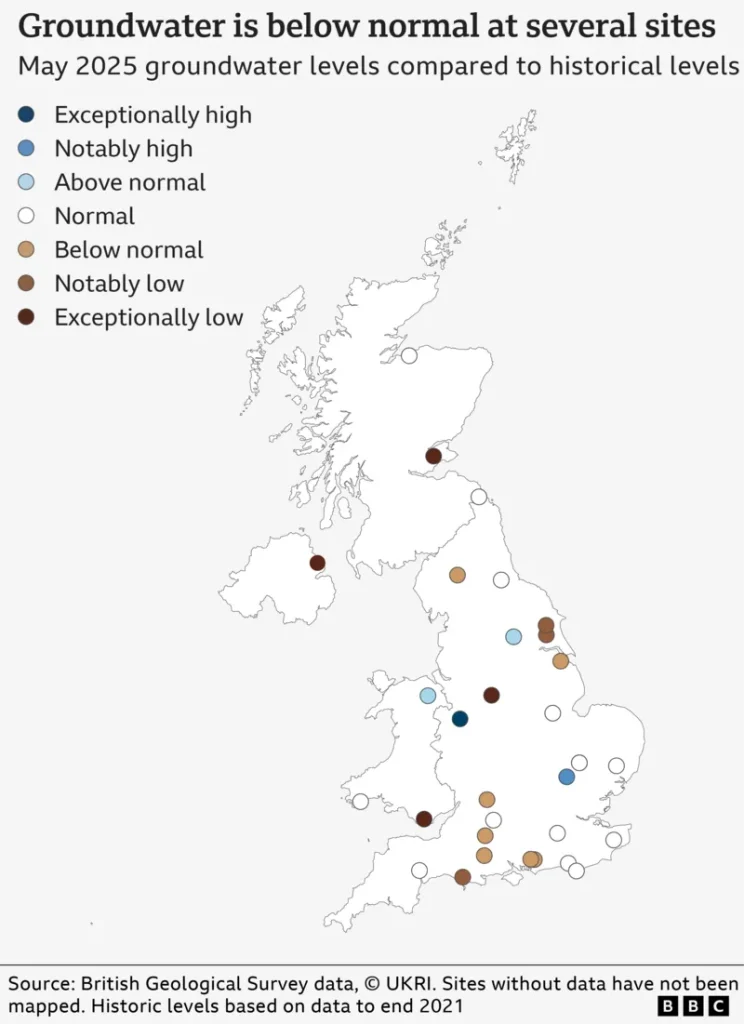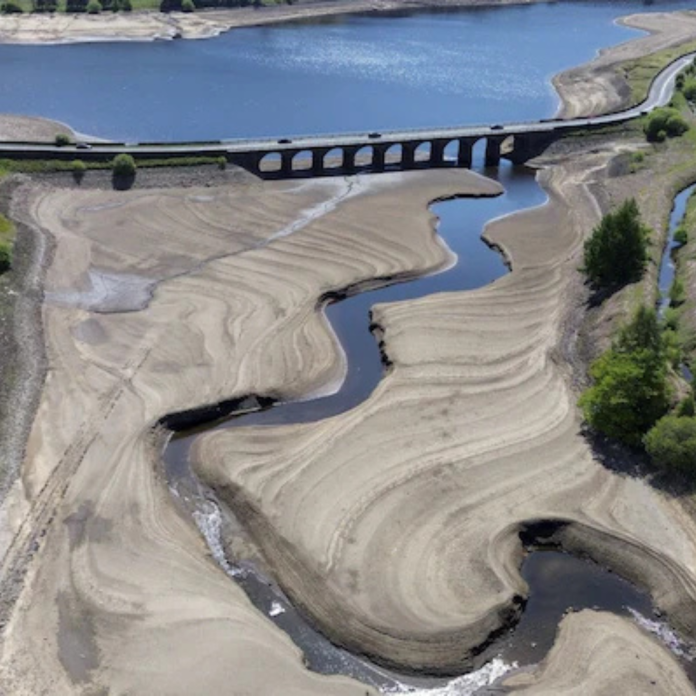Across parts of the UK, the land is cracking, rivers are receding, and the air carries a dry, uneasy stillness. From Yorkshire’s golden fields to the rolling hills of eastern Scotland, the warning signs are no longer subtle—they’re sounding like alarm bells. Drought has already arrived in parts of the country, and if the skies remain dry, more regions may soon be facing a stark and thirsty future.
A Nation on Dry Ground
If you live in north-west England or Yorkshire, the government has already declared it official: you’re in a state of drought. And you’re not alone. Water companies in eastern Scotland and parts of Wales report worryingly low water levels, a sign that the crisis is spreading.
This creeping drought isn’t just an inconvenience. It touches every part of life—from the food on our tables to the wildlife in our gardens. Farmers are struggling to irrigate their crops. Wetlands are drying up, threatening the nesting grounds of birds. Even common garden birds like blackbirds are finding it hard to dig worms from sun-hardened earth.
One of the Driest Springs in History
There is no single, universal definition of drought in the UK, but one thing is certain: rain has been scarce. Between March and May, almost every corner of the UK saw significantly less rainfall than normal—marking the sixth driest spring since records began in 1836.
This means less moisture to feed our rivers, recharge our reservoirs, or soak into the rocks beneath our feet. And while June brought a touch more rain in some areas, much of central and eastern England and Scotland remained parched.
Long-range forecasts only deepen the concern: July and August are expected to bring even drier conditions. The threat of widespread drought looms.
Rivers Running Low, Reservoirs Running Dry
At the end of May, nearly 75% of UK river monitoring sites reported “below normal” flows—or worse. About 20% of rivers showed “exceptionally low” flows, comparable to infamous drought years like 1976, 2011, 2018, and 2022.
Reservoirs, lifelines for millions, are showing troubling signs as well. In northern England, some are at their lowest late-spring levels in over 30 years. In Scotland, reservoir levels are below normal, particularly in the east. Welsh reservoirs are faring slightly better, but even they show signs of strain in areas like Mid and South Ceredigion.
Northern Ireland’s levels remain close to average—for now.
Trouble Beneath the Surface
The story underground is no less concerning. In southeast England, groundwater—vital to the region’s supply—relies on rain to trickle into aquifers over time. These aquifers respond slowly to drought, offering some protection during dry spells. But when the droughts drag on, groundwater can also run dangerously low—and recovery takes far longer.
That means the southeast may not feel the pinch immediately, but once it does, the effects could be long and painful.
Farms Struggling, Wildlife Threatened
For farmers like Rachel Hallos, vice-president of the National Farmers’ Union, the signs are unmistakable. “It’s quite shocking that we are still only in early July,” she told the BBC. “It looks like it’s the end of August when you look at the ground.”
To save their crops, farmers have resorted to irrigation, a costly measure that further strains the already limited water supply. The uncertainty ahead is frightening: What will the harvest look like? How will livestock be fed through the winter?
Nature, too, is suffering. Wetlands are shrinking. Birds are losing their nesting grounds. Even blackbirds can’t find food in baked soil. The RSPB warns that this may become the new normal, urging for resilient habitats that can endure prolonged dry weather.
Climate Change: The Invisible Hand Behind the Heat

Droughts are complex. They’re shaped by both natural variability and human actions. While no single dry spell can be blamed solely on climate change, rising global temperatures are tipping the scales.
Warmer air absorbs more moisture, increasing evaporation from soil, rivers, and reservoirs. This speeds up the onset of droughts and exacerbates heatwaves and even wildfires.
“The atmosphere is thirstier,” says Professor Richard Allan of the University of Reading. “It pulls moisture from the land faster, deepening and accelerating drought conditions.”
A Race Against Time
The UK government is making plans—nine new reservoirs for England by 2050, and one already under construction at Havant Thicket in Hampshire. But those solutions are decades away.
In the short term, the Environment Agency warns of possible water restrictions, including hosepipe bans and smart meter rollouts. Leak reduction and public awareness campaigns may also be needed.
Water companies in Scotland, Wales, and Northern Ireland are drawing up their own plans to shore up supply, but the reality is clear: this is not a localized crisis. This is a national challenge—and it’s just beginning.
By BBC



